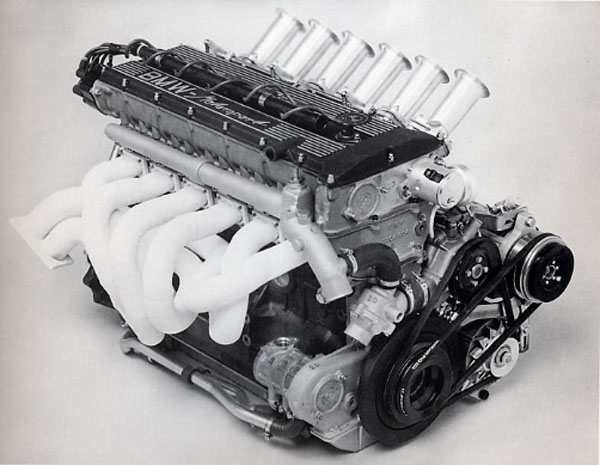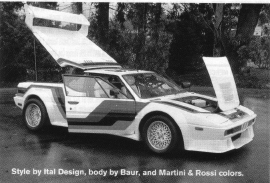While BMW enjoyed quite a bit of success with its 3.OCSi racing car in the mid-'70s, it realised something faster was needed to

in the hotly contested World Championship for Manufacturers. BMWs M88 twincam, inline six had already been developed into a potent powerplant; they were reliably posting more than 700 hp on the dyno. To be eligible for competition in the Manufacturers series, BMW needed to produce 400 units in a production car.
Giorgio Giugiaro's Ital Design firm was commissioned to take the 1972 BMW Turbo show car from a dream into a shape capable of meeting the myriad requirements of street duty. Initially, a partnership with Lamborghini was formed to help with development work and to tune the suspension. Unfortunately for Lamborghini, with their financial troubles at the time, the project returned to Germany.
BMW selected Stuttgart coachbuilder Baur, who had the expertise to bring the M I from prototype to the sales floor, so Baur built the bodies and installed the BMW manufactured drivetrain. BMW also decided the 3453cc engine should be produced with 277 hp, enabling the M1 to get from 0 to 60 in 5.4 seconds on its way to a 161 mph top speed.
The fourvalves percylinder engine breathed through Kugelfischer fuel injection, used a 9.5 to 1 compression ratio, and proved to be quite tractable. ZF provided the fivespeed transaxle.
By the time the M1 started production late in 1978, the rules were clarified to state that a car would be eligible for the Manufacturers series after at least 400 examples were not just produced, but sold to the public. At 100,000 deutsche marks (approximately $55,000), it would be 1981 before enough were sold so that the Ml could be launched into competition. By then, the M1 was outdated.
However, a stroke of marketing genius on the part of BMW Motorsport chief Jochen Neerpasch allowed the M I to race on the Continent. He conceived a plan to bring credibility to the M1 program through a one-marque series that would be run as a support race on the same day as Grand Prix races. FISA accepted the idea, and in 1979 BMW coaxed many Forrnula One drivers into these modified M1s for the so-called Procar Series.
Approximately 40 to 50 identical M1s were prepared for the series. These models received a deep front spoiler, aerodynamic body sills, a rear spoiler and wide fender flares. Power output of the modified engines was said to be between 470 hp and 500 hp. Rounds were conducted at such familiar tracks as Monaco, Monza, Silverstone and Hockenheim, in addition to former Grand Prix hotbeds of competition such as Zolder, Zeltweg and Zandvoort. Niki Lauda took the Procar crown in 1979 and in 1980 Nelson Piquet picked up the championship.
Although a total of 456 (or 457) M1s were built between 1978 and 1981, the fame and publicity went to the Procars, and these were featured in the press and on posters. A number of original cars have been modified with the Procar flares and spoilers, the Martini & Rossi tri-color paint scheme, more comfortable interiors, and engine/chassis modifications. The Procar was, and is, a racing icon.











 Reply With Quote
Reply With Quote


 in the hotly contested World Championship for Manufacturers. BMWs M88 twincam, inline six had already been developed into a potent powerplant; they were reliably posting more than 700 hp on the dyno. To be eligible for competition in the Manufacturers series, BMW needed to produce 400 units in a production car.
in the hotly contested World Championship for Manufacturers. BMWs M88 twincam, inline six had already been developed into a potent powerplant; they were reliably posting more than 700 hp on the dyno. To be eligible for competition in the Manufacturers series, BMW needed to produce 400 units in a production car.





